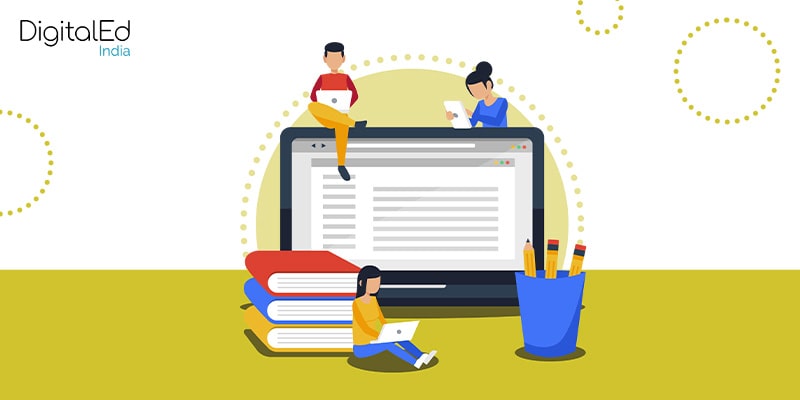Top Benefits of A Flipped Classroom

Introduction
When students are assigned homework, they often feel lost or overwhelmed. Yet, the core purpose of assignments is to reinforce what they’ve learned in class. The flipped classroom model addresses this by keeping students actively engaged and preventing early disengagement during class.
In a flipped learning environment, lessons begin with a short assessment—be it a quick quiz, smartphone poll, or clicker-based survey—to gauge understanding and direct focus. Making these assignments engaging ensures students revisit concepts before moving forward.
Pioneered by education expert Jon Bergmann , flipped learning has redefined how educators approach teaching. It supports a personalized learning experience, encourages independent study, and aligns with the shift toward individualized learning goals. However, the flipped classroom model requires student buy-in and should always be implemented with teacher consent.
While creating digital lectures and materials can demand significant time and resources, the long-term benefits for both students and educators make the investment worthwhile
Benefits of Flipped Learning for Students
How Flipped learning works in the classroom is a common question in teachers’ minds, but how does it help students? A successful flipped classroom enables students to consume lesson materials at home, learning more efficiently. This model allows teachers to assign readings, films, and other resources to students and allows them to watch them at any time. By utilizing this method, teachers eliminate the need to spend two class periods watching a single film and instead focus on the student’s needs. Multiple benefits of a flipped classroom enhance student engagement in the learning activity.
1. Robust Learning Environment
With the flipped classroom, students can interact with teachers more, which leads to better learning outcomes. With a flipped classroom, students can complete their project-based work in the privacy of their homes. This means that students can spend more time working together, which is a great learning strategy and promotes collaboration. Due to this, students can catch up on missed classes without any extra work, which allows them to achieve a higher grade than they could have.
2. Interpersonal and Intrapersonal Development
A flipped classroom promotes the development of future-ready skills and helps students develop independent study habits. It also boosts the quality of exams, improves engagement, and fosters better communication between teacher and student. Creating a flipped classroom makes students more confident in their abilities and motivates them to learn more.
3. Autonomous Learning
Along with the benefits mentioned above, a flipped classroom also gives students more control over their learning. They can review material at their own pace, write down questions, and discuss the issues in class. With a flipped classroom, students can be more independent and take the time to understand the concept. This is a huge benefit to student achievement and behavior.
4. Conceptual Understanding
The flipped classroom model helps students gain a deeper understanding of a topic by allowing them to watch lectures at home before class. This allows students to apply their new knowledge in class while doing their homework. With a flipped classroom, students will have an opportunity to ask questions, collaborate, and build a deeper understanding of the subject. If a student misses a class, they can catch up more easily.
5. Deep Learning
When students complete homework, they can steer the discussion and ask for clarification. A flipped classroom also allows students to take control of class time. By allowing students to take the time to do their homework, teachers can spend more time on more important aspects of the course.
Benefits of Flipped Learning for Educators
1. Deeper Student Evaluation
In a flipped classroom, students are given the freedom to take the time to apply what they have learned in class. Moreover, a flipped classroom gives educators more time to analyze, create, and evaluate the students. The flipped classroom can help teachers learn and assess students more efficiently. This way, a flipped classroom can be an effective solution for many educational problems. As a result, a redesigned flipped classroom benefits teachers and students alike.
2. Create Flexible Teaching Environment
Using a flipped classroom methodology helps teachers create a more flexible teaching environment. It also allows students more time to create, analyze, and evaluate materials. Educators can focus more time on teaching and analyzing the students with a flipped classroom. This means they can focus on the actual learning process instead of simply explaining it to students. It is an excellent opportunity for a flipped classroom to involve students in their own education.
Key Features of a Successful Flipped Learning Environment
1. Adaptability and Flexibility
A well-implemented flipped classroom model accommodates diverse learning paces. It offers targeted feedback, more personalized instruction, and increases teacher-student interaction.
2. Active and Engaged Learning
Instead of passive listening, students participate in discussions, problem-solving, and hands-on activities. This active engagement helps learners connect theoretical content with real-world applications.
How Möbius Enhances Flipped Classroom Learning
Möbius, a powerful digital learning platform for STEM, facilitates flipped classrooms by enabling educators to assign interactive lessons, quizzes, and assessments that students can access at their own pace. This flexibility promotes deeper understanding, independent study, and seamless active learning. Integrating Möbius transforms passive learning into active engagement by enabling students to explore concepts at their own pace before class—freeing up valuable classroom time for discussion, problem-solving, and hands-on application in a flipped learning environment.
Conclusion
When paired with platforms like Möbius, the flipped classroom model fosters critical thinking and deeper engagement. It shifts focus from traditional instruction to active learning, helping students develop essential skills for success. Despite initial challenges, the benefits—like enhanced academic outcomes and independent learning—make it a valuable approach for modern education.
Want to explore deeper? Book a Möbius demo today!